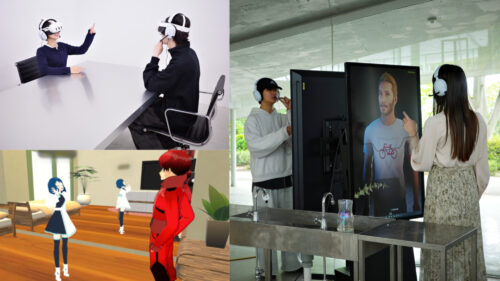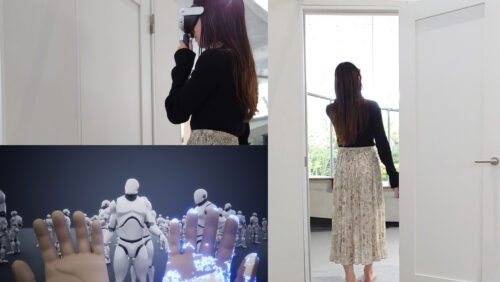The „difference in stance“ between people while communicating is a cause of stress and distress. On the other hand, in the ever-evolving human enhancement of technology, avatars are about to develop into a transformative technology that can not only solve these personal stresses and worries, but also turn the social tide. We have developed „realAIze,“ a system that combines avatars and AI to control appearance, voice pitch, inflection and phrasing in real time, allowing for stance manipulation.
Will AI intervention in avatar communication improve our well-being?
The „difference in stance“ between people while communicating is a cause of stress and distress. For example, people with different opinions attack each other using language that includes harassment. In addition, there is a social tendency for minority opinions to be drowned out by the majority. Another factor is that physical limitations prevent people from communicating with others as they would like.
On the other hand, in the ever-evolving human enhancement technology, avatars are about to develop into a transformative technology that can not only solve these personal stresses and worries, but also turn the social tide.
We have developed „realAIze,“ a system that combines avatars and AI to control appearance, voice pitch, inflection and phrasing in real time, allowing for stance manipulation.
Our question is: Can AI be used to solve the problems caused by this difference in stance? Is the solution appropriate? We aim to determine how extensively visitors accept or reject and embrace or disregard this technology. The experience of the three pieces of work gives the user a sense that mental stress can be controlled by using “realAIze” to address the above-mentioned miscommunications. In addition, users can see a quantified stereotype of themselves as determined by the AI based on their behavior. This makes the user aware of their own stance, and we are convinced that the sharing of individual „stance“ among people may direct the flow of the world.
-

Because of my stuttering
Nagisa Ono, Haku Aritomi, Masahito Chujo, Tsunefusa Sugao, Hinata Ohkawa, Misato Tamura, Hiroki Komai, Takuma Nishio, Kenji Kubota, Hideyuki Ando (JP)
Stuttering hinders communication by disrupting the tempo of conversation. People who stutter are teased by those who look down on others who cannot do what is taken for granted: talking fluently. But is it bad to not be able to speak smoothly?
-

First time standing out
Hinata Ohkawa, Misato Tamura, Nagisa Ono, Haku Aritomi, Masahito Chujo, Tsunefusa Sugao, Hiroki Komai, Takuma Nishio, Kenji Kubota, Hideyuki Ando (JP)
Many feel comfortable dressing the same or conforming to those around them.A few, on the other hand, prefer to change their fashion style and hair color frequently. In this work, observers get an insight into the position of a minority whose sense of self is eroded by the pressure exerted by a large majority.
-

Kasuhara
Nana Yamada, Nagisa Ono, Haku Aritomi, Masahito Chujo, Tsunefusa Sugao, Hinata Ohkawa, Misato Tamura, Hiroki Komai, Takuma Nishio, Kenji Kubota, Tomoko Ohtani, Hideyuki Ando (JP)
We created artwork that allows people to experience the problems arising from the disparity in stance between employees and customers, by replacing them with animals to provide a comical experience. The observer experiences both the real-world problems and a world where AI filters out aggressive words.

Department of Art Science, Osaka University of Arts
Osaka University of Arts is a Japanese private university headquartered in Osaka Prefecture. It is Japan’s only overseas member university of the American Association of Colleges of Art and Design (AICAD), and the largest comprehensive art university in Japan.
Credits
Nagisa Ono, Haku Aritomi, Masahito Chujo, Tsunefusa Sugao, Hinata Ohkawa, Misato Tamura, Hiroki Komai, Takuma Nishio, Nana Yamada, Kenji Kubota, Tomoko Ohtani, Hideyuki Ando
This exhibition was supported by Osaka University of Arts and JST CREST (JPMJCR22P4).
